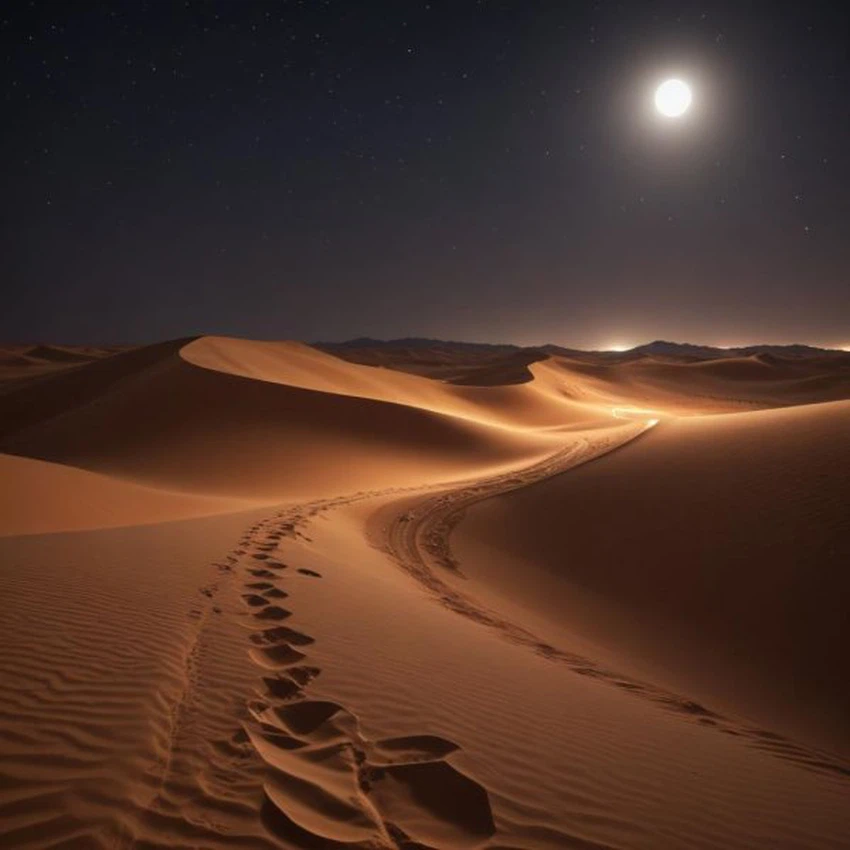On the Hijri New Year.. How was the weather part of the Muslims’ journey throughout history?
Weather of Arabia - With the advent of the Hijri New Year, Muslims around the world remember the noble Prophet’s migration, which is a major turning point in Islamic history, but it is not only the story of the move from Mecca to Medina, but it also includes environmental and climatic factors that had a major impact on the course of this year. The historical journey .
Climate variation in Hijaz
While there were parts of Hijaz that enjoyed fertile soil and heavy rains that could cause lightning strikes, these heavy rains would sprout different types of plants and trees, and the Holy Qur’an spoke in many verses about this goodness that descends from the sky, and how it contributes to bursting springs and sprouting crops from Grapes, palm trees, pomegranates, olives and grains :
{And it is He who sends down water from the sky, and with it We bring forth the growth of all things, and from it We produce green trees; from it We produce grains mixed together, and from the palm trees, from their shoots, full Indeed, it is a close land and gardens of grapes and olives and pomegranates, similar and not similar. Look at its fruit when it bears fruit and produces it.} [Al-An'am: 99].
These verses address the people of Hijaz, especially the people of Mecca, referring to the fertile areas in Hijaz and the areas adjacent to Mecca, such as Taif and its suburbs, the valleys between Mecca and Jeddah, and Yathrib (Medina) and its suburbs. To this day, these areas still contain springs and valleys and enjoy the greenery of the plains, gardens of palm trees, grapes, and various fruits and crops .
-
The impact of drought on the Hijaz
However, the drought that swept through the Arab countries, including the Hijaz, turned most of its lands into a barren desert and led to the separation of centers of stability. This great influence on social and political life in the Arabian Peninsula hindered the emergence of major societies, which made political and social life depend on the tribal system. Whether in the desert, or in areas where organized kingdoms and governments arose, or in political cities such as Mecca and Medina, the tribe became the The basic unit of Arab society in general .
Weather at the time of the Prophet's migration
-
Climatic and natural regions in Hijaz
The regions of Hijaz are characterized by their diversity in terms of climate and nature. Some regions suffer from severe drought, high temperatures, and water shortages, and are surrounded by mountains, which makes their residents depend on the resources brought to them from abroad. The most prominent of these regions is Mecca, which is located in an uncultivated valley and was Mecca relies heavily on external resources brought to it, and its people considered the sanctity and status of the Sacred House a reason for their livelihood and security. Therefore, they did not rush to follow the Prophet Muhammad - may God bless him and grant him peace - when he was sent as a prophet, for fear of losing these advantages that they enjoy :
{And they said, “If we follow the guidance with you, we will be snatched from our land. Have we not established for them a secure sanctuary to which are brought the fruits of all things, a provision from Us? They did not know.} [Al-Qasas: 57] .
-
The importance of mountains in Mecca
Due to the intense heat in Mecca, its residents would flee to the shadows and to the surrounding mountains to take shelter from the heat. These mountains provided a natural refuge for people to protect themselves from the hot sun, which gave the mountains of Mecca great importance .
-
Water scarcity and the virtue of irrigation
Mecca was suffering from a water shortage, which made the task of irrigation, i.e. providing water for pilgrims, a great virtue in the eyes of its people. This explains the great hospitality that was given to the story of digging the Zamzam Well, as this well was a vital source of water for pilgrims and the residents of Mecca alike .

Climate challenges
In the first Hijri year, the Arabian Peninsula was known for its harsh weather, with days characterized by high temperatures and nights by extreme cold. The migration journey from Mecca to Medina covered about 400 kilometers across the barren Arabian desert. This difficult road was not easy thanks to its rugged terrain and difficult climate, which increased The difficulty of the journey for the Prophet Muhammad - may God bless him and grant him peace - and his companions .
During the migration, Muslims faced many climatic challenges. The scorching heat during the day posed a great danger, especially in open desert areas, and dry winds and shifting sands made movement more difficult and affected their ability to travel safely. At night, the extreme cold required special means to keep warm .
-
Adapting to the environment
The Prophet Muhammad, may God bless him and grant him peace, and his companions relied on their deep knowledge of the local environment and terrain to overcome these challenges. They used specific paths that avoided the harshest places and took roads that provided them with water and shade whenever possible. This knowledge and ability to adapt were the reason for the success of the migration .

Weather and Islamic conquests
After the migration, Muslims continued their historical journey to spread Islam in different regions. The weather played an important role in the Islamic conquests, as they had to adapt to diverse climates ranging from dry deserts to cold mountains. The ability to adapt to different climatic conditions was a decisive factor in the success of Muslims in building countries and societies. New .
Weather played an important role in several invasions during the period of the Prophet, and it affected the conduct of battles and their results. Here is a look at the effect of weather in some prominent invasions :
-
Battle of Badr (2 AH)
the weather :
Rain : It rained on the night of the battle .
the influence :
- Positive effect on Muslims : The rain made the land of Muslims more solid, while it made the land of polytheists muddy, making their movements difficult .
- Purifying the hearts of Muslims : Rain helped calm the souls of Muslims and raise their morale .
-
Battle of Uhud (3 AH)
the weather :
There are no special reports on the weather in Ghazwat Uhud .
the influence :
The effect of the weather was not noticeable, but the hills surrounding Uhud were part of the terrain that affected the course of the battle, especially with regard to the positions of the archers .
-
Battle of the Trench (5 AH)
the weather :
Strong winds and extreme cold : during the long siege .
the influence :
- Negative impact on the parties: The strong winds uprooted their tents, overturned their pots, and extinguished their fire, which led to the dispersion of their forces and the disintegration of their alliance .
- Positive effect on Muslims : The wind was gentle on Muslims despite the close distance between the two armies, which helped maintain their morale .

-
The Battle of Tabuk (9 AH)
the weather :
There are no reliable sources detailing the weather conditions during the Battle of Tabuk, but it is believed that the weather conditions were hot and dry, as is usual in the region during the summer.
the influence :
- A great challenge for Muslims : The long journey under the hot sun and lack of water was a great test of the endurance and patience of Muslims .
- Roman withdrawal : No actual fighting took place, as the Romans withdrew for fear of confrontation .
Harsh weather conditions, while at other times, weather conditions helped Muslims excel and achieve victory .
Weather and agriculture in Medina
After settling in Medina, the climate had a major impact on the daily lives of Muslims. The city had a better climate than Mecca, which helped develop agriculture and improve living conditions, as Muslims took special care of agriculture, as they exploited water resources and fertile land to grow various crops such as dates, grains, and vegetables .
-
The constant influence of weather
Weather still plays an important role in the lives of Muslims today. The Hijri calendar is based on the moon, which means that the Hijri months move through the different seasons. This makes Islamic occasions come in different weather seasons each year, which affects how we celebrate, fast, and perform worship .
Weather was and still is an integral part of the Muslim journey throughout history. From the Prophet's migration to Islamic conquests, and adaptation to diverse climatic conditions, Muslims have demonstrated a unique ability to adapt to their surrounding environment. On the Hijri New Year, we remember this historic journey and draw lessons from it about resilience and creativity in facing environmental and climate challenges .
See also :
An Arab city welcomes autumn in the midst of summer
Sources:
mawdoo3
surahquran
aljazeera
Arabia Weather App
Download the app to receive weather notifications and more..



